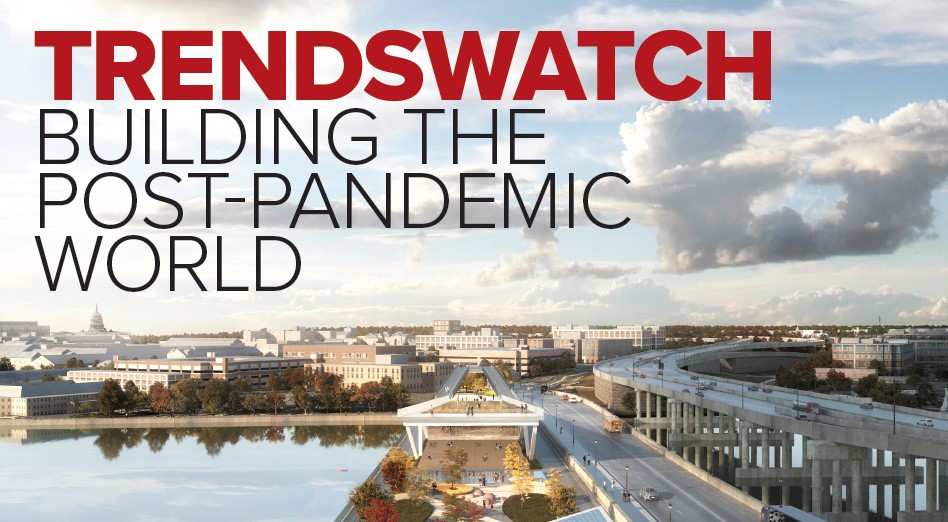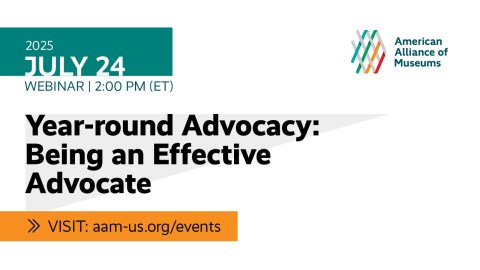
In 2023, we, as individuals and organizations, are faced with choices that will determine what the post-pandemic future will look like. Will we try to rebuild a version of 2019, in so far as we are able, or will we use disruption as an opportunity for change? The forthcoming edition of AAM’s forecasting report, TrendsWatch: Building the Post-pandemic World, explores four critical issues that present museums with the opportunity to help create a better, more equitable, and more resilient future.
This year TrendsWatch will be published as the January/February issue of Museum, putting the forecast in the hands of over 23,000 readers, and helping them to explore critical issues facing museums and society. (Later this year the report will be shared as a PDF complete with embedded links to supporting articles and research—watch this blog and AAM communications for notification of that release.) While you watch for the magazine to arrive in your mailbox, here is a preview of the four major TrendsWatch topics this year:
The Future Workplace
The past three years constituted a vast, involuntary experiment in labor practices—where and how work can be accomplished, what workers want, and what employers need to do to attract and retain staff in the face of an unprecedented labor shortage. Though the press is already moving from “quiet quitting” to the next buzzword, the underlying trend remains—people are questioning the elevation of work as a priority above family, friends, and health. Society is confronting the fact that, absent higher compensation and better working conditions, many essential frontline positions will go unfilled. In the coming year, society, and the museum sector, will continue that conversation, examining how employers and staff can work together to create equitable, sustainable workplaces. Some things I will be tracking: museums committing to paying a living wage, capping salary ratios (and, in some cases, CEO compensation), and creating pathways for advancement for staff at all levels of the org chart. Also, unionization, research on what makes for a healthy work culture, and legislation regarding work conditions, hours, and pay.
Digital (R)evolution
It can be difficult to distinguish between (enduring) trends and (transitory) fads, especially when it comes to digital technologies. Unfortunately, fads tend to get a disproportionate share of press coverage. Last year my newsfeed was swamped with stories about cryptocurrency and NFTs (non-fungible tokens issued and traded on the blockchain.) 2022 closed with the implosion of FTX, which until that point had been one of the leading cryptocurrency exchanges, sending the entire cryptocurrency market into a tailspin and depressing the value of and market for NFTs. The current crypto financial crisis doesn’t necessarily presage the end of cryptocurrencies or cryptocollectibles, and I will consider to explore whether and how museums might engage with NFTs. (See this post, as well as this one for last year’s thoughts on the topic.) However, my bigger concern is ensuring that more fundamental digital trends receive the attention they deserve. Will the public maintain their appetite for digital engagement as the world reopens, or will there be a place-based backlash to three years of extreme screen time? How are museums deciding whether to increase their investments in digital programs and services and virtual experiences, or to cut back? How does that decision, in turn, change staffing and budgeting? In a tight labor market, how are museums using digital tools and digital strategies to address their staffing challenges?
The Partisan Divide
In 2021 the American Library Association issued a statement decrying attempts to censor what books and information libraries can provide, followed this year by a statement condemning violence and threats of violence against library workers and patrons. These statements dramatize how libraries are being targeted by the hyper-partisan activism which is creeping into all areas of public life. Museums are beginning to be caught up in this new round of culture wars as well—pressured to censor exhibits and cancel events supportive of the LGBTQ+ community, and impacted by legislation that curtails DEAI training. Might the current backlash overwhelm a decade of progress towards inclusive attitudes? Can the US even maintain a functional democracy in the face of intransigent positions, self-segregation by political beliefs, and increased acceptance of violence as a legitimate political tool? In the coming year, I’ll be watching for instances (hopefully rare) of museums targeted by censorship, punitive defunding, protests, or violent acts. I also will collect and share stories of museums fostering civil civic participation, combatting divisive rhetoric, and creating politically inclusive communities and workplaces.
Repatriation, Restitution, and Reparations
Sometimes, after decades of gradual change, trends pick up speed and we start rushing towards a distant horizon. I think we are at such an acceleration point with regards to how the public, governments, and museums deal with the disposition of collections that have been obtained in a legally or morally questionable manner. After years of mounting pressure, last year the dam burst with regards to repatriation of material looted from Benin by British expeditionary forces in 1897, with prominent museums in Germany, the UK, and the US committing to voluntary return of material to Nigeria. The Vatican recently announced it would return three fragments of the Parthenon Marbles to Greece, and now there are rumblings that the British Museum might do so as well. These examples illustrate a shift from narrow, legal compliance towards a values-driven approach to redressing past wrongs. This cultural recalibration may, in turn, drive changes in the law. I’ll be following regulatory changes (including attempts to draft federal legislation addressing the rights of descendants to possession or control of human remains and material culture associated with people who were enslaved) as well as stories of museums undertaking voluntary repatriation. I’m particularly interested in how society, including museums, begins to go beyond repatriation to address restitution and reparations, taking actions to make amends for the damage inflicted on individuals and cultures.
As always, TrendsWatch will be a starting point for these explorations. Please reach out to me via comments on this post, or at emerritt (at) aam-us.org if you have stories you would like to share!









Thank you for posting this article. Repatriation is actually the focus of my senior project.